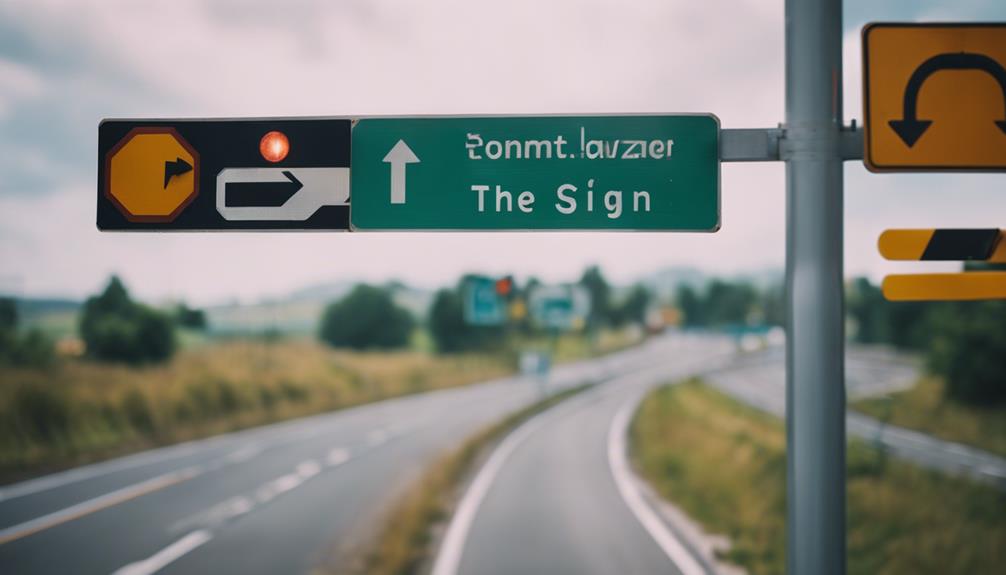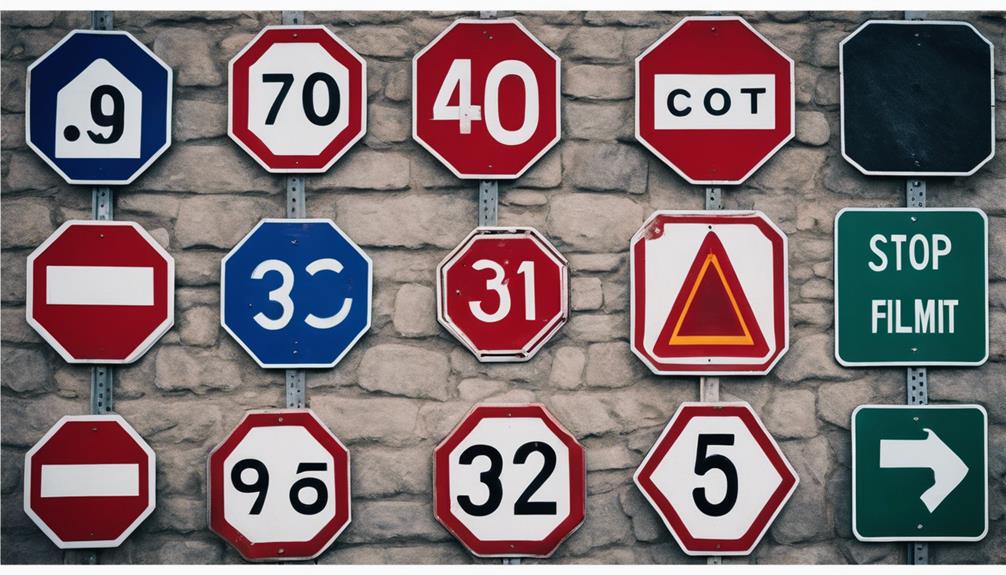Sans-serif fonts like Highway Gothic, Interstate, and Clearview are used on road signs for clear visibility and easy reading. These fonts have clean designs without fancy decorations, making them perfect for quick communication while driving. Highway Gothic, for instance, introduced lowercase letters in 1958 to boost readability. Understanding these fonts is vital to making effective road signs. Their evolution has greatly shaped sign typography. By grasping these font styles, you'll have a solid foundation for creating informative and readable road signs. Mastering these fonts is essential for effective communication on highways and roads.
Key Takeaways
- Highway signs use sans-serif fonts like Highway Gothic, Interstate, and Clearview for clarity.
- Sans-serif fonts lack decorative elements and have a modern design for effective communication.
- FHWA Series fonts, including Highway Gothic, set the standard for highway signage typography.
- Interstate font, designed for highway signs, offers exceptional clarity and readability.
- MUTCD mandates specific typefaces like Highway Gothic, Interstate, and Clearview for road signs.
Importance of Font Visibility
Indisputably, font visibility on road signs stands as an essential factor in ensuring rapid readability for drivers traveling at high speeds. The choice of sans-serif fonts like Highway Gothic, Interstate, and Clearview is prevalent due to their clarity and legibility, especially from a distance.
These fonts are designed to enhance visibility, making them vital for road sign fonts. Factors such as font size, color contrast, and simplicity play pivotal roles in maximizing the effectiveness of these fonts on road signs. It's essential to adhere to font standards like MUTCD and SHS guidelines to guarantee excellent font visibility and readability.
Despite efforts to improve readability and visibility on road signs, some font choices like Clearview encountered approval challenges. When designing roadside signage, prioritizing font visibility through appropriate font selection, size, and color contrast is crucial for ensuring the safety of drivers on the road.
Characteristics of Sans-Serif Fonts
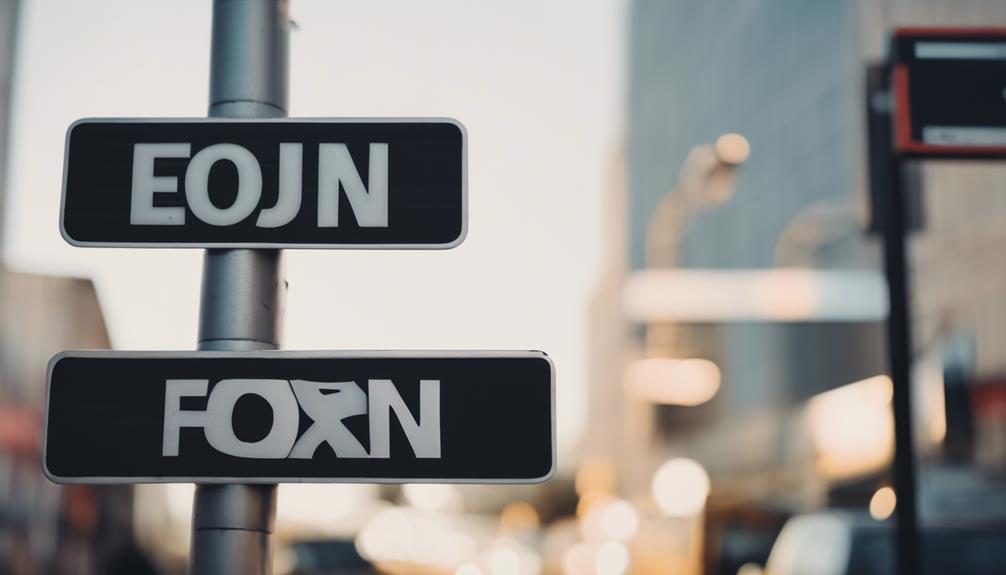
Sans-serif fonts, such as Highway Gothic, are characterized by their clean and modern design, making them highly readable for drivers at high speeds. These fonts belong to a series that lack decorative flourishes on the ends of characters, enhancing readability from a distance.
The absence of serifs contributes to a straightforward and contemporary appearance, ideal for clear communication on road signs. Sans-serif fonts are favored for their simplicity and legibility, effectively conveying essential information quickly to drivers. The clear and concise design of these fonts ensures excellent visibility and comprehension, important for safety and navigation on the road.
When it comes to road signs, the use of sans-serif fonts plays a significant role in enhancing communication, promoting safety, and aiding drivers in making quick and informed decisions. Mastering the characteristics of these fonts is essential for creating effective and easily readable signs on highways and roads.
Highway Gothic Font History
Let's explore the history of the Highway Gothic font, which encompasses its origin, design evolution, and standardization process.
This iconic font was officially defined in 1948 for road signs, with various Series developed during World War II.
Importantly, the lowercase alphabet was added to the Highway Gothic font in 1958, marking a significant milestone in its development.
Origin of Highway Gothic
During the early 1940s, the development of the FHWA Series fonts, including Series A through F of the Highway Gothic fonts, laid the foundation for standardized highway signage.
The addition of the Lowercase alphabet in 1958 expanded the font's versatility, enhancing readability.
Series E Modified, a variation of the Highway Gothic font, was introduced in 1949-1950, further refining its design for peak visibility.
Although Clearview typeface was proposed to replace the FHWA series for road signs, the Highway Gothic fonts remained prevalent due to their proven legibility and recognition.
The evolution of these fonts marked a significant milestone in typography and typeface design, shaping the history of highway signage and ensuring uniformity in communication on the roads.
Design Evolution
The evolution of the Highway Gothic font over the years has been a demonstration of its adaptability and enduring relevance in road sign design. FHWA Series fonts were officially defined in 1948, with Series A through F developed during World War II.
In 1958, the lowercase alphabet was added to Highway Gothic fonts, enhancing readability. A variation, Series E Modified, emerged between 1949 and 1950, showcasing the font's flexibility.
Despite its long-standing presence, the Clearview typeface was proposed to replace the FHWA series for road signs, indicating a potential shift in design preferences. The font's design evolution reflects the continuous efforts to enhance signage clarity and effectiveness on highways, ensuring safe navigation for drivers.
Standardization Process
In our exploration of the Highway Gothic font history, the standardization process played a pivotal role in shaping the evolution and consistency of signage design for highway systems. The FHWA Series fonts were officially defined in 1948, with Series A through F developed during World War II.
The introduction of the lowercase alphabet in 1958 brought a significant change to the Highway Gothic font. Series E Modified, developed between 1949-1950, brought about significant modifications to enhance legibility.
Interestingly, there was a point where the Clearview typeface was considered to replace the traditional FHWA Series fonts. This process of standardization ensured that highway signs across the country maintained a uniform and recognizable appearance, promoting safety and efficiency on the roads.
Interstate Font Usage
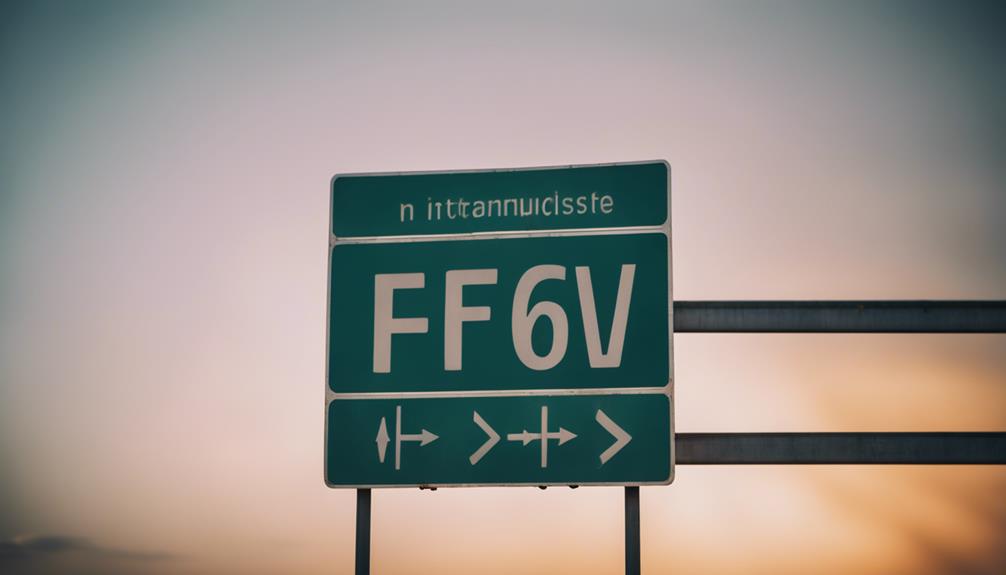
Traveling through the vast network of highways in the United States, one instantly recognizes the distinctive Interstate font gracing the road signs, ensuring clear communication at high speeds. Designed by Tobias Frere-Jones, the Interstate font is a sans-serif typeface specifically crafted for highway signs. Its primary strength lies in its exceptional clarity and readability, essential elements for conveying information quickly to drivers traveling at high speeds.
The font's straightforward yet modern design enables easy recognition and legibility even from a distance, making it a popular choice for various transportation signage applications beyond just highways. Whether indicating speed limits, providing directional guidance, or displaying important information, the Interstate font excels in delivering messages effectively in a clear and concise manner.
Its widespread usage across the United States underscores its importance in maintaining safety and ensuring seamless navigation for all road users.
Clearview Font Research

Clearview font has been extensively studied to determine its effectiveness for road signs.
These studies have looked into the font's history, legibility research findings, and practical applications on road signs.
Understanding the research behind Clearview font is essential for improving signage readability and safety on the roads.
Clearview Font History
Developed as an alternative to Highway Gothic fonts, the Clearview typeface was designed with improved legibility and visibility on road signs in mind. The Clearview font features wider character spacing and modified letterforms, enhancing recognition from a distance.
Categorized into W series and B series, Clearview fonts offer different variations for positive-contrast legends on guide signs. Despite potential readability benefits, Clearview fonts faced approval challenges for highway signage.
Studies on legibility and driver response were conducted during Clearview font research, with varied results impacting its adoption. Ongoing discussions persist regarding the use of Clearview fonts in highway signage due to these approval challenges.
Legibility Research Findings
Examining the legibility research findings on road signs, what were the conclusions drawn from studies on the Clearview font's effectiveness?
Studies on the Clearview font for road signs showed varied results. The research focused on evaluating the visibility and readability of this font in different environmental conditions, aiming to enhance the legibility of guide signs for drivers. Specifically, the impact of positive-contrast legends was studied to improve readability.
These findings influenced decisions on font choices for road signage to guarantee excellent readability. The Clearview font research highlighted the importance of considering factors like visibility and readability in font selection for road signs, emphasizing the need for fonts that are clear and easy to read under various conditions.
Road Sign Application
After reviewing the legibility research findings on road signs, it becomes evident that the application of the Clearview font in signage design is a topic of significant importance.
The Clearview font was developed specifically for guide signs and was approved for use with positive-contrast legends on road signs. It offers two main typeface groupings: the W series and the B series.
The Clearview W series consists of seven different typefaces tailored for various applications. Studies on the Clearview font have shown varying results regarding its effectiveness on road signs. Understanding the distinctions between the W series and the B series is essential for optimizing the application of the Clearview font in signage design.
MUTCD Font Standards
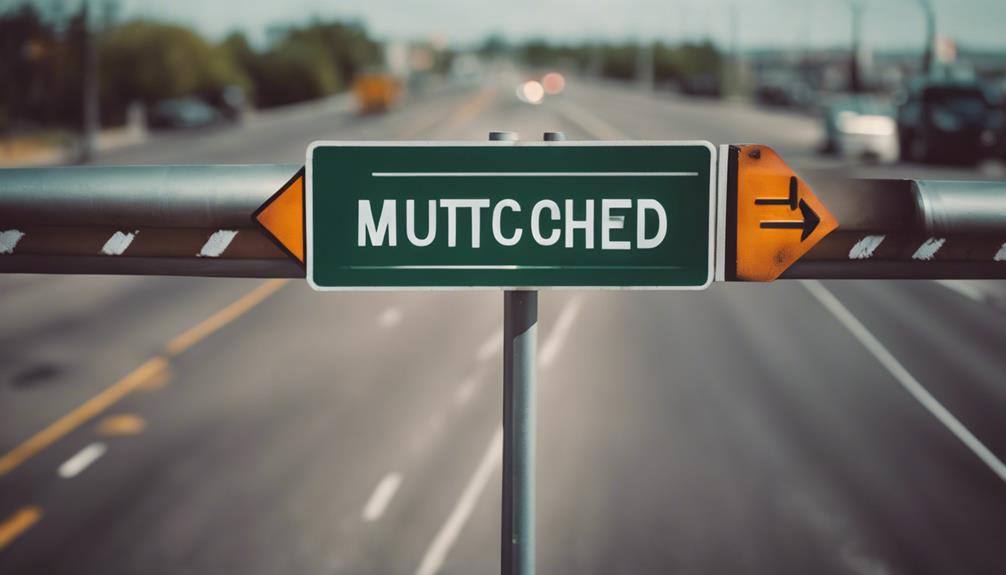
Setting the standard for font usage on highway signs in the United States, the MUTCD (Manual on Uniform Traffic Control Devices) dictates specific typefaces like Highway Gothic, Interstate, and Clearview, along with guidelines to guarantee excellent readability and visibility.
Font size, color contrast, and simplicity are vital factors considered in MUTCD-approved fonts for roadside signage. In 2004, lower-case letters were introduced to improve readability. Despite meeting visibility criteria, font choices such as Clearview faced approval challenges.
By adhering to MUTCD font standards, road signs become more accessible and easier to understand for drivers traveling the roads. It's essential to recognize the importance of these guidelines in creating effective signage that provides clear information while maintaining safety on the roads.
MUTCD font standards play a critical role in ensuring that highway signs across the country are uniform, visible, and easily legible, contributing to a more efficient and secure transportation system.
SHS Font Recommendations
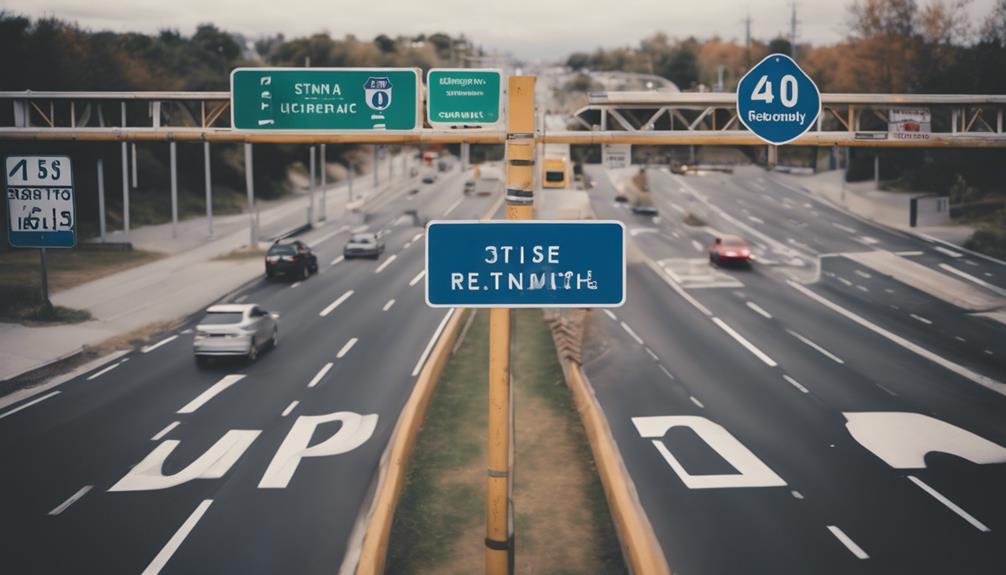
When considering font choices for road signs, SHS recommends utilizing sans-serif fonts like Arial, Calibri, and Helvetica. These fonts are clean and easy to read, making them ideal for roadside messaging. To guarantee excellent visibility and readability, SHS suggests the following:
- Limit font choices to two: Using a maximum of two fonts helps maintain a cohesive and readable design for signage.
- Consider font size: Font size should be adjusted based on passing speed to ensure that the message is visible and easily readable by drivers.
- Utilize upper and lower case letters: A combination of upper- and lower-case letters enhances visibility, especially on digital road signs.
- Improve communication effectiveness: By following SHS font recommendations, the effectiveness of roadside messaging and communication can be greatly enhanced.
Following these guidelines not only improves the visibility of road signs but also ensures that important messages are communicated clearly to drivers, contributing to overall road safety.
Optimizing Font for Road Signs
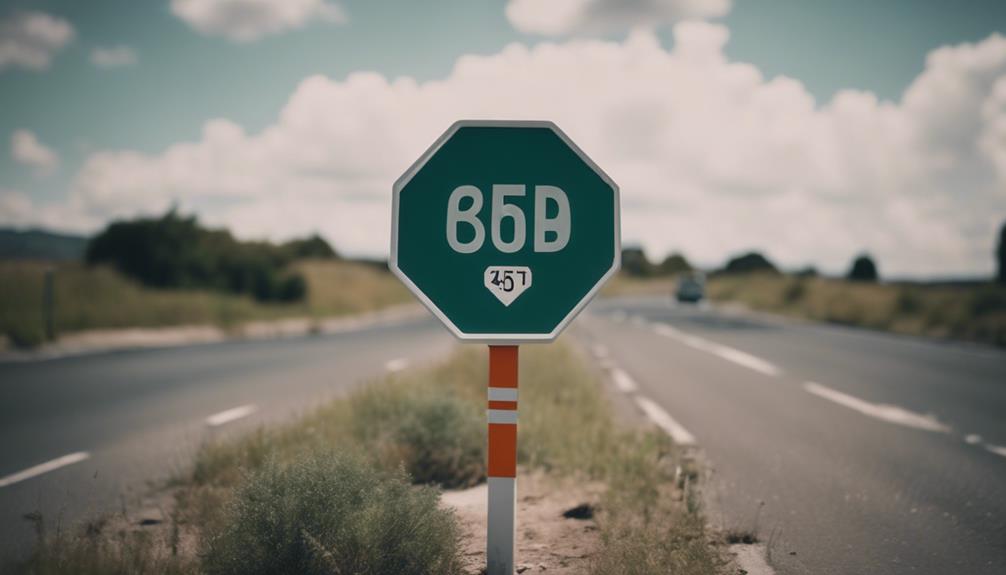
To enhance readability and visibility on road signs, selecting appropriate sans-serif fonts like Highway Gothic, Interstate, or Clearview is essential. These fonts are commonly used due to their effectiveness at high speeds.
The FHWA Series fonts, such as B, C, D, E, and F variations, are outlined in the Standard Alphabets for Traffic Control Devices for highway signs. Maintaining a lower-case loop height that's typically 75% of the upper case height in these fonts helps enhance legibility and consistency in signage.
When optimizing font choices for roadside signs, factors like font size, color contrast, and simplicity play a significant role in ensuring quick readability for drivers. Designers and transportation authorities adhere to MUTCD and SHS guidelines to select appropriate fonts like Highway Gothic, Interstate, or Clearview for effective communication on the roads.
Frequently Asked Questions
What Font Is Road Marking Text?
We use sans-serif typefaces like Highway Gothic for road marking text. These fonts are specifically designed for readability at high speeds.
The Federal Highway Administration (FHWA) standardizes fonts like FHWA Series B, C, D, E, and F for road signs. Lower-case letters were approved for signage in 2004. Modifications like Series E Modified exist to enhance letter visibility on signs.
It's essential to use these fonts for clear communication on the road.
What Are Fonts Like Street Signs?
Fonts used on street signs are important for readability and safety. FHWA Series B, C, D, E, and F are common for highway signs in the US, while Clearview typefaces like W series are approved for guide signs.
Button Copy, with its reflectors, enhances visibility. National Park Service uses NPS Rawlinson and Frutiger 65. Various fonts are in use, with Button Copy no longer made domestically.
These fonts make sure important information is clear and visible on the road.
What Font Is Similar to Highway Gothic?
Interstate, Overpass, PF Grand Gothik Variable, PF Highway Sans, Traffic, and Clearview are similar to Highway Gothic. These fonts maintain the same style and design elements as Highway Gothic, making them suitable alternatives.
Each font offers its own unique features while staying true to the essence of Highway Gothic. When searching for fonts resembling Highway Gothic, these options provide a range of choices to explore for various design needs.
What Font Do Signs Use?
We use specific fonts on road signs to guarantee excellent visibility and readability. Lower-case letters were approved in 2004, enhancing design and legibility. Fonts like Highway Gothic, Interstate, and Clearview are commonly used for their visibility benefits.
Adherence to MUTCD and SHS guidelines is essential for high-speed legibility. But, what font do signs use? Let's explore the approved options and their impact on roadside communication.
Conclusion
To sum up, road signs use fonts like Highway Gothic and Clearview to guarantee maximum visibility and readability for drivers. These fonts are specifically designed to be easy to read from a distance and at high speeds. In the UK, road sign fonts adhere to strict guidelines to ensure consistency and clarity. The **UK road sign fonts**, such as *Transport* and *Motorway*, are used across the country to maintain legibility in various driving conditions. Like their counterparts in other regions, these fonts are carefully crafted to reduce the risk of misinterpretation and provide clear information to drivers at a glance.
By following MUTCD font standards and SHS font recommendations, road authorities can optimize font usage on signs to enhance safety and navigation for all road users.
Remember, font choice on road signs plays an essential role in keeping our roads safe and efficient.

